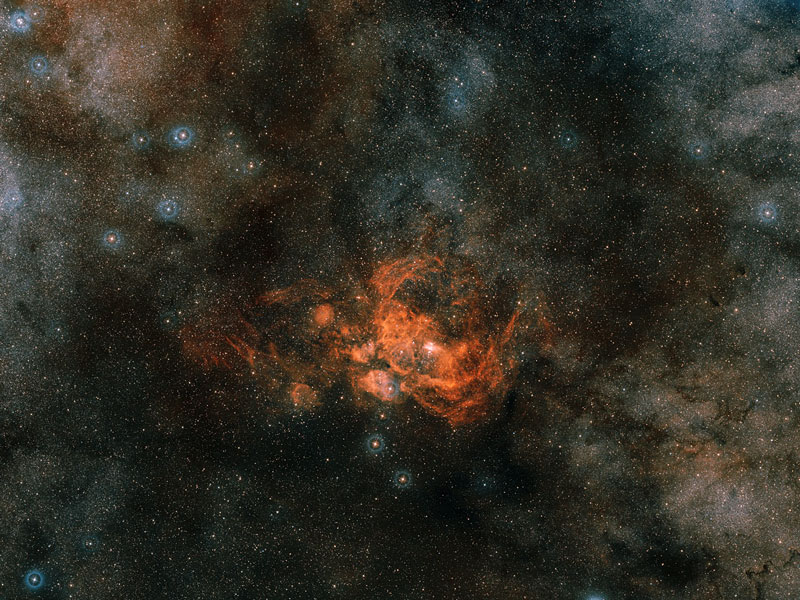DECEMBER 20, 2006
Star Forming Region NGC 6357
EXPLANATION
For reasons unknown, NGC 6357 is forming some of the most massive stars ever discovered. Near the more obvious Cat’s Paw nebula, NGC 6357 houses the open star cluster Pismis 24, home to these tremendously bright and blue stars. The overall red glow near the inner star forming region results from the emission of ionized hydrogen gas. The surrounding nebula, shown above, holds a complex tapestry of gas, dark dust, stars still forming, and newly born stars. The intricate patterns are caused by complex interactions between interstellar winds, radiation pressures, magnetic fields, and gravity. NGC 6357 spans about 400 light years and lies about 8,000 light years away toward the constellation of the Scorpion.
Credit
Davide De Martin (ESA/Hubble), the ESA/ ESO/ NASA, Photoshop FITS Liberator & Digitized Sky Survey 2


